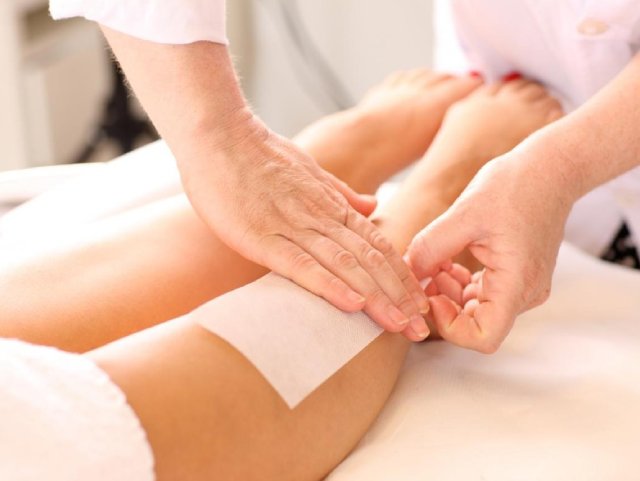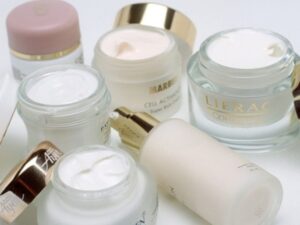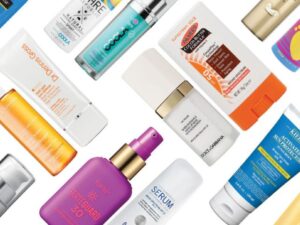Most of us visit the salon for relaxation and rejuvenation therapies, rather than for any real treatment. Services range from hair beautification to epilation, hand and foot care, massages and skin bleaching. A parlor visit is no longer the prerogative of the young, wealthy woman.
More and more older women, men of all ages and middle classes individuals are now visiting salons. As a result of this, spas and salons are mushrooming in every nook and cranny of our modern cities, often with unscrupulous and under-qualified staff who’re cashing in on the trend, to make a quick buck. This often leads to complications and side effects arising from treatments which are normally considered safe.
What are the common pitfalls to look out for? Which treatments are better avoided? And how can I minimize the risk of side effects?
Most of the parlor-related misadventures that I come across in my practice, are related to hair removal treatments. Waxing can lead to an eruption of boils on the skin, and skin burns on rare occasions. Post waxing bumps and boils are most frequently noted on the face, outer arms and thighs. This is probably because of the haphazard direction of hair growth in these areas. If you’re prone to waxing-induced bumps, boils and ingrown hair, then I suggest you use a mild apricot/walnut based scrub on your skin (while showering) for a couple of days before your salon appointment. Do not moisturize, and keep your skin dry before waxing. Only use hot sugar wax and disposable strips. Ask your beautician to ice your skin soon after waxing, and carry a tube of over-the-counter antibiotic cream like Fucidin®. Apply the antibiotic cream to the treated area twice a day for 3-5 days post waxing, and avoid hot showers for a day or two. Don’t pick on ingrown hair or you’ll be left with ugly cuts and scars. Wait for them to grow out on their own, then pull them out with a tweezer. Despite these measures, if the boils still recur each time you wax, then you may have to seriously consider laser hair reduction treatments. Laser treatment will not make your skin completely hair free, but it will make your hair grow slower and much thinner. Electrolysis is painful, expensive, outdated and risky.
If you’ve burnt your skin from the hot wax, then rub ice or run the affected area under cool running water. Rush to your local chemist for a medical grade antibiotic cream, which you can apply over the burn, 3 times a day, till you can get an appointment with the dermatologist. If you notice any blisters, do not pop them or dress them with bandaids. Your doctor will drain it using sterilized, disposable needles, and may prescribe oral antibiotics.
Some women find threading very painful, and certain viral skin infections like warts and molluscum can be spread to your face if the thread is infected. Unfortunately, these rarely go away on their own without medical treatment. Avoid any further plucking or threading until the lesions have completely resolved.
Problems related to bleaching and facials are also fairly common. If you have acne-prone skin, it is wise to avoid facials altogether, especially just before important events like weddings. This is because, if you are to develop a bad flare-up of acne from a facial, your dermatologist will not even have enough time to fix the problem before your big event. If you have sensitive skin, do not get bleach and facial done on the same day. Mild tingling is to be expected, but if you experience any irritation, itching or burning sensation during your treatment, then inform your beautician immediately. Make sure she stays by your side till the treatment is completed. If you notice a rash or excessive redness, then consult your doctor immediately. Do not use steroid creams on your face without a doctor’s prescription. After bleach or a facial, it is important to use a medical grade sunscreen on your face.
Hair coloring is an extremely popular and fashionable trend. Gone are the days when only the middle-aged graying person would sheepishly ask his chemist for “hair dye”. Lately even teenagers choose to color their hair, often experimenting with various colors and changing their color every few weeks. Unless your child is suffering from premature graying, forbid hair coloring till late teens at least. If you’re only using hair color as a fashion statement, give a gap of at least 3 months between each treatment. Beginners can first get highlights done, before opting for global colors. If you have grays, give a 6 week gap between root touch-ups. If this is your first time, insist on a “patch test”, where a small amount of hair dye is applied to your inner elbow for an hour. If there is no skin irritation or rash after 24 hours, then you’re not allergic. However, do keep in mind, that frequent hair coloring can eventually sensitize your skin over a few years. So it is always possible to develop hair dye allergies, even after years of safe usage. If you feel any burning sensation or rash on your scalp, forehead or around your eyes, consult your dermatologist without delay. I will add here, that it has been noted that allergic reaction to hair dyes applied at the parlor is less severe than that seen after home application, probably related to less spillage, and less eye contamination from post color hair shampooing. Frequent hair coloring can leave your hair dry and damaged, unless you use deep conditioning treatments. If you’re pregnant, avoid hair coloring, especially in the first three months of your pregnancy.
If you are allergic to hair dye, but would like to continue hair coloring, you may have to choose options like natural henna and vegetable dye based colors. Black henna and ammonia free hair colors also contain the dye which is responsible for allergies.
Hair waving and straightening procedures involve the use of certain chemicals that alter the shape of the hair. These chemicals weaken the hair shaft by about 17% every time the shape of hair is changed. This leads to split ends, hair fall and breakage, which is particularly severe if you’ve had a permanent straightening done. Hair and scalp burns can also occur, especially with use of hot combs. Hair extensions must be chosen correctly and placed with care, or they can cause hair fall and leave bald patches on the scalp. Fortunately, most of this hair damage is reversible once you stop getting these treatments done.
The focus of hand and foot care is usually on the nails. The steps of manicure and pedicure include soaking the hands and feet in warm soapy water, rubbing off dead skin with pumice stone and emery boards, pushing back of the cuticle, massage of the parts, and finally application of nail paint. The instruments used must be properly sterilized. Certain instruments such as nail files cannot be sterilized, so make sure your salon is using disposable files. Thorough cleansing in boiling water with antiseptics like bleach can kill most bacteria and fungus, but viruses tend to stay back. These can give rise to warts on the palms and soles. So if possible, try to buy and create your own personalized pedicure kit. This should consist of a nail clipper, nail file, cuticle pusher, foot file, emery board, gel toe separators, nail buffer, nail brush, foot brush and pumice stone. Replace your emery board, buffer, nail file and pumice stone after 5-6 uses. These are easily available in most local beauty stores. Prolonged soaking and use of artificial nails can lead to nail splitting, fungal infections of the nail and inflammation of the nail folds. Infections are more common if you’ve shaved your legs with a razor before your pedicure.
Aromatherapy is a form of therapy that uses volatile essential oils from plants and flowers for the purpose of affecting a person’s mood or health. The most commonly used essential oils are tea tree oil, lavender, jasmine, eucalyptus oil, peppermint oil, lemon oil, orange oil, clove oil, oil of Bergamot and Citronella. While tea tree oil has shown anti-bacterial properties in lab studies, the benefits of other essential oils are anecdotal and not medically proven. Certain essential oils cause skin allergies, skin pigmentation and sun burn like reaction. Some of these allergies can even be caused by pesticides, if the original plants are cultivated. Some of these oils can be extremely toxic, if ingested orally; therefore children must be kept out of reach. If you experience any skin rashes following use of these oils, contact your dermatologist, and if possible, carry the oil with you, so that your allergic reaction can be confirmed with a repeat-open-application-test. This goes for massage oils as well. Inexperienced masseuses can burn or bruise your skin with hot oils and stones.
To summarize, choose your beautician and your beauty treatments wisely. Ensure that only high grade cosmetics are used, and insist on checking the expiry date. Before enlisting yourself for any treatment, have a thorough consultation with your beautician. Inform her about pre-existing allergies and skin conditions. Consult a dermatologist to find out what beauty treatments are safe for your skin and hair type. As far as possible, use disposable instruments or carry your own. Experience and training matters, so do not have a casual approach towards the quality and hygiene standards of your salon environs.




